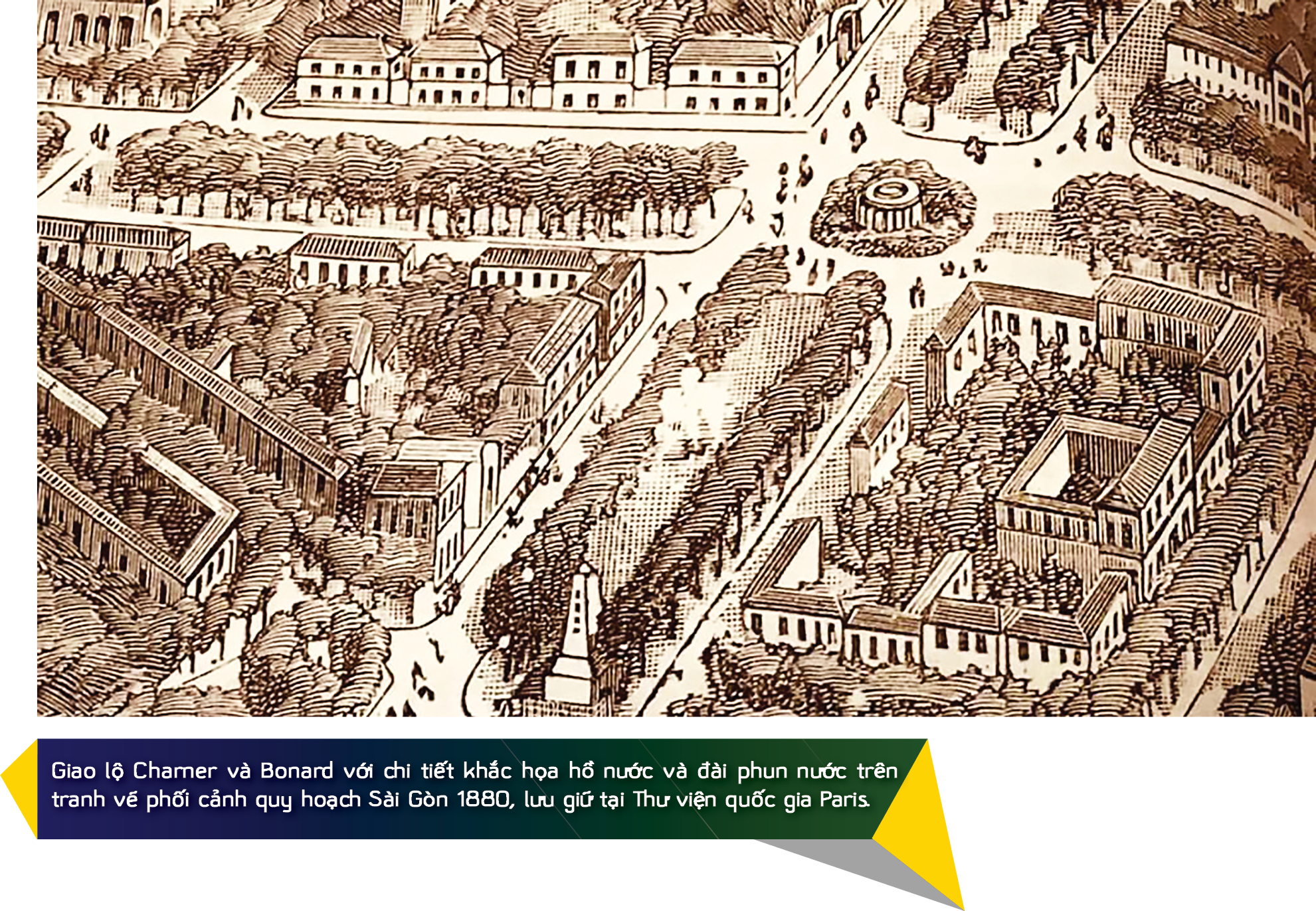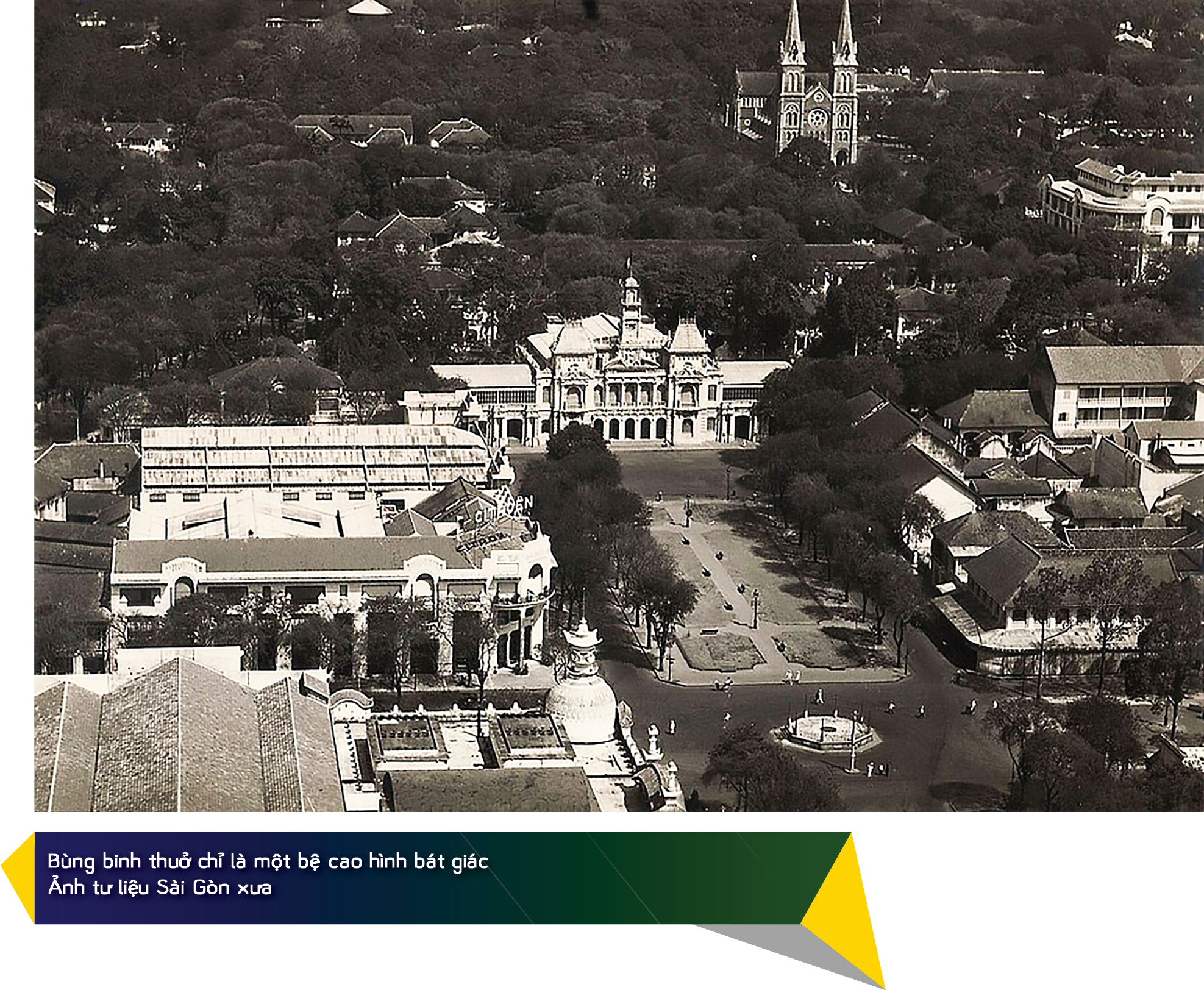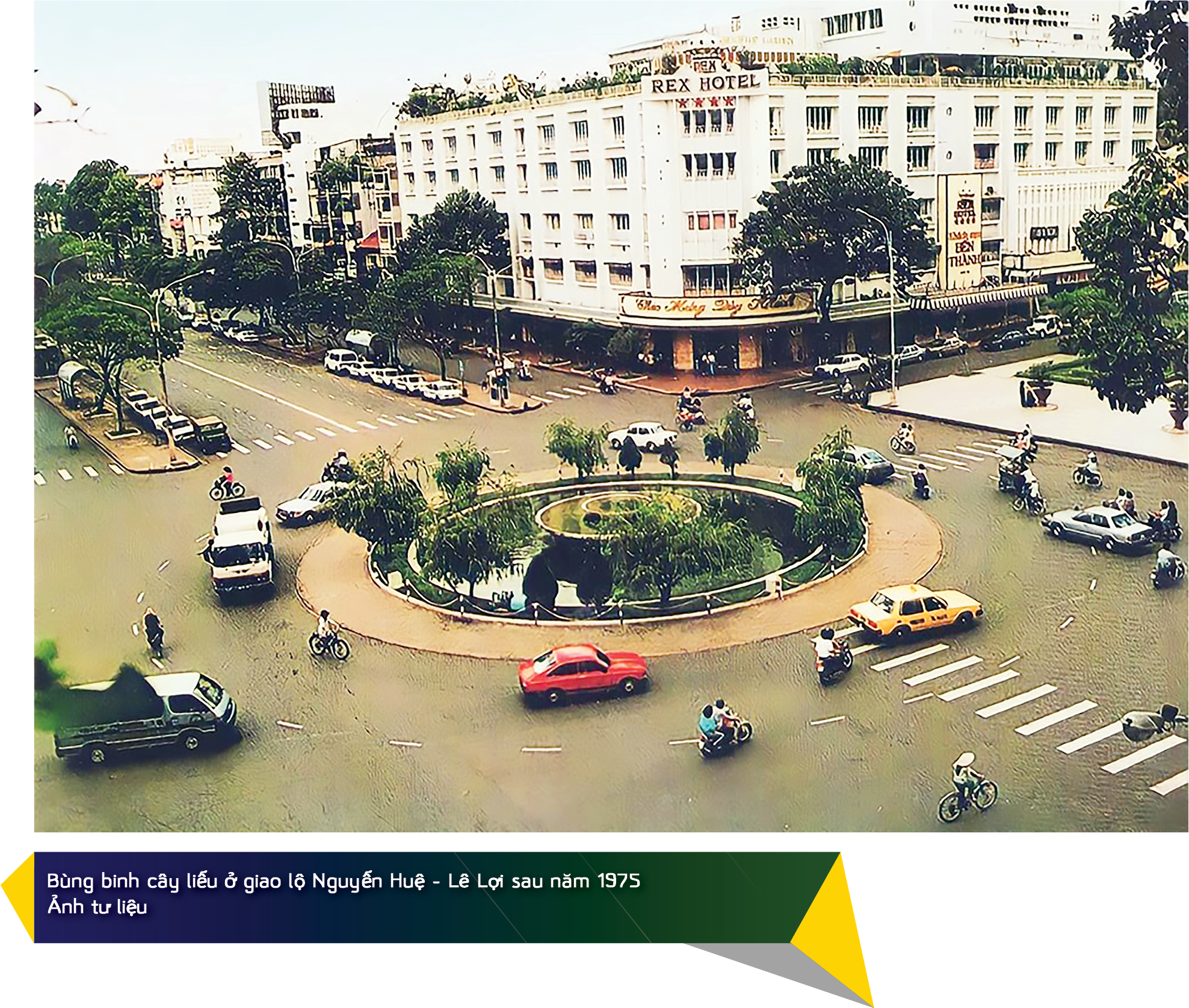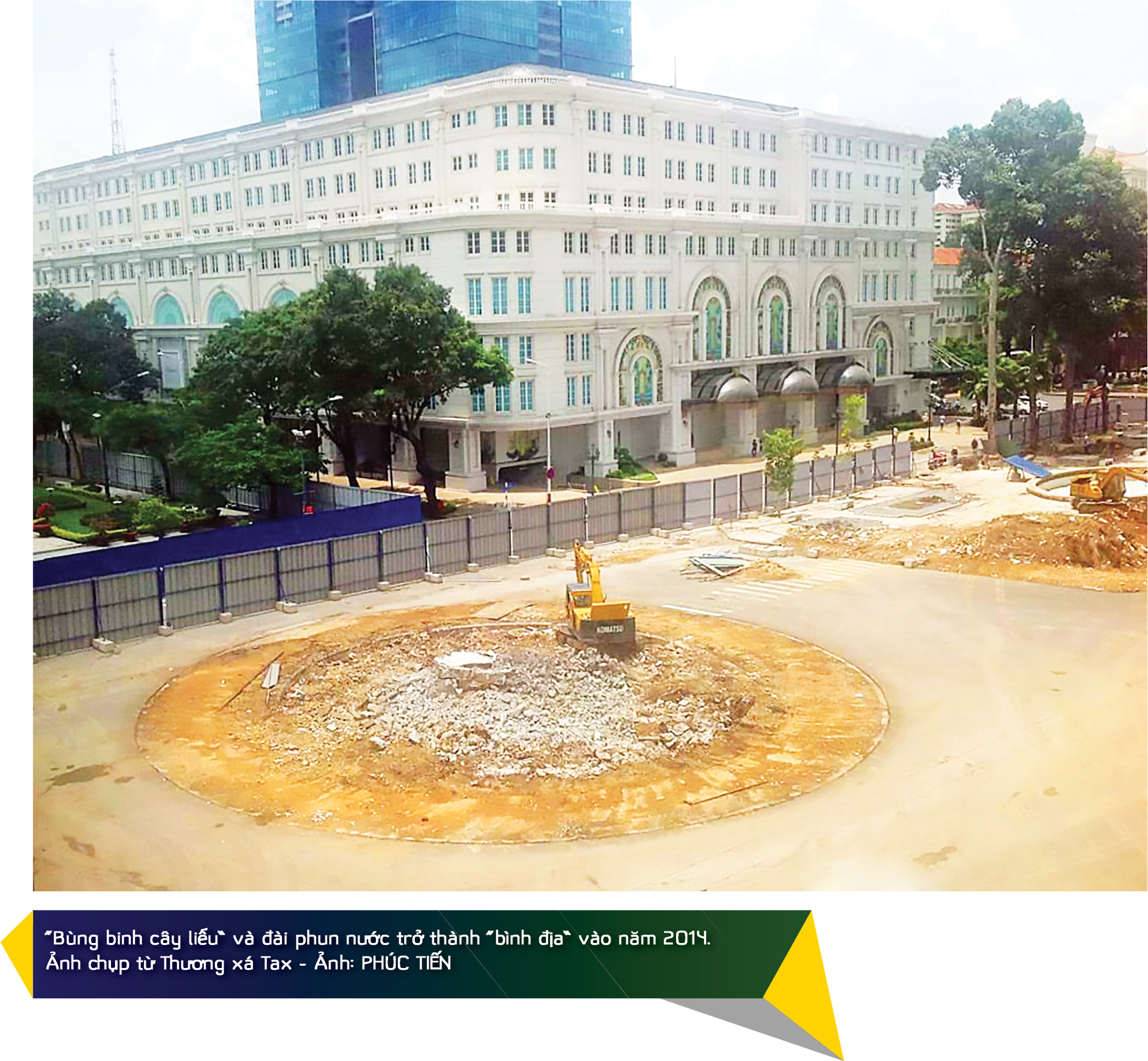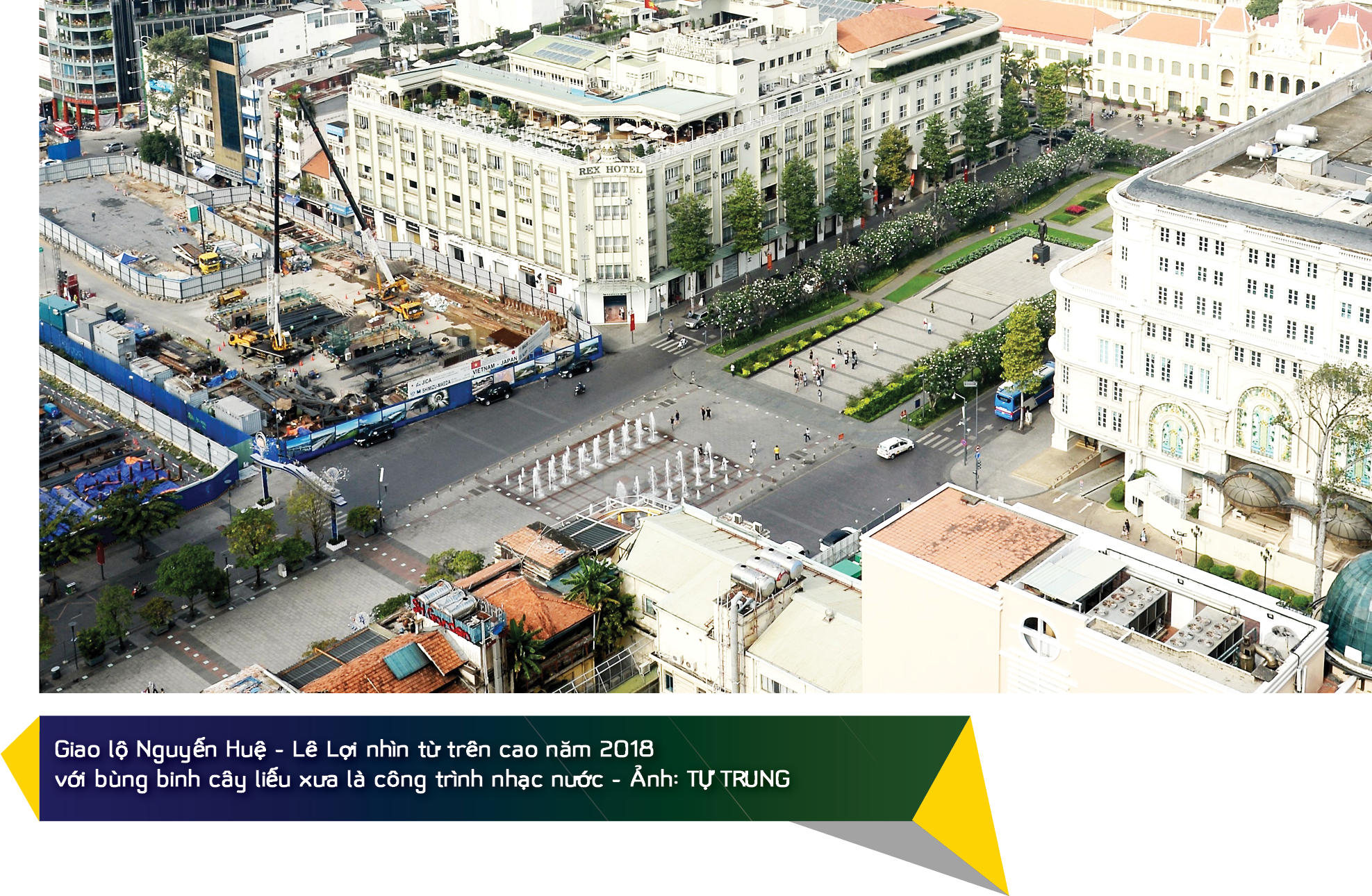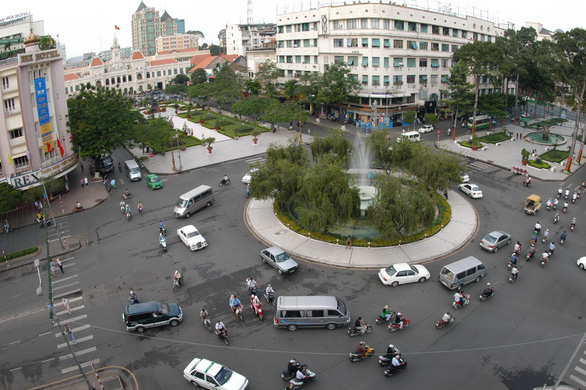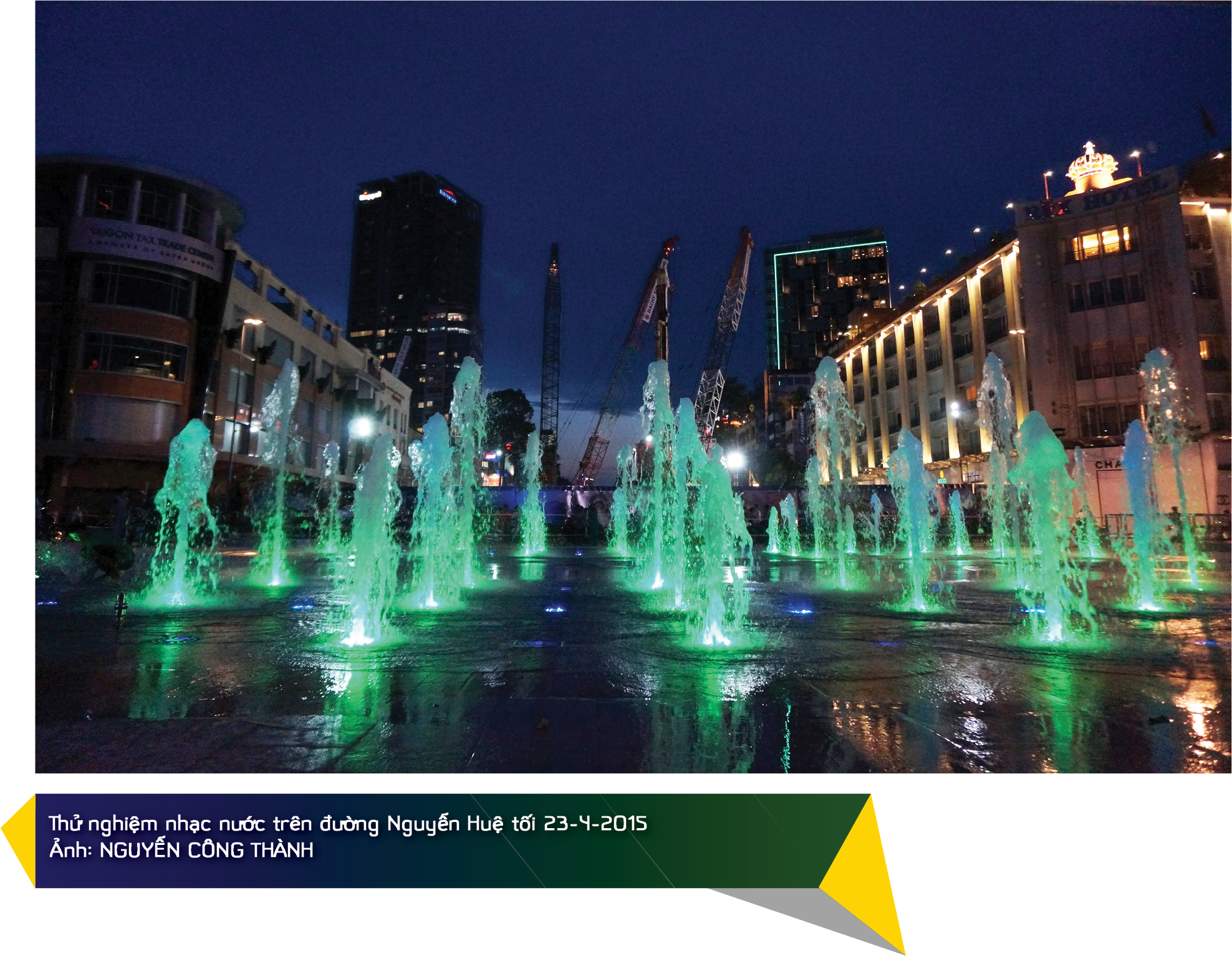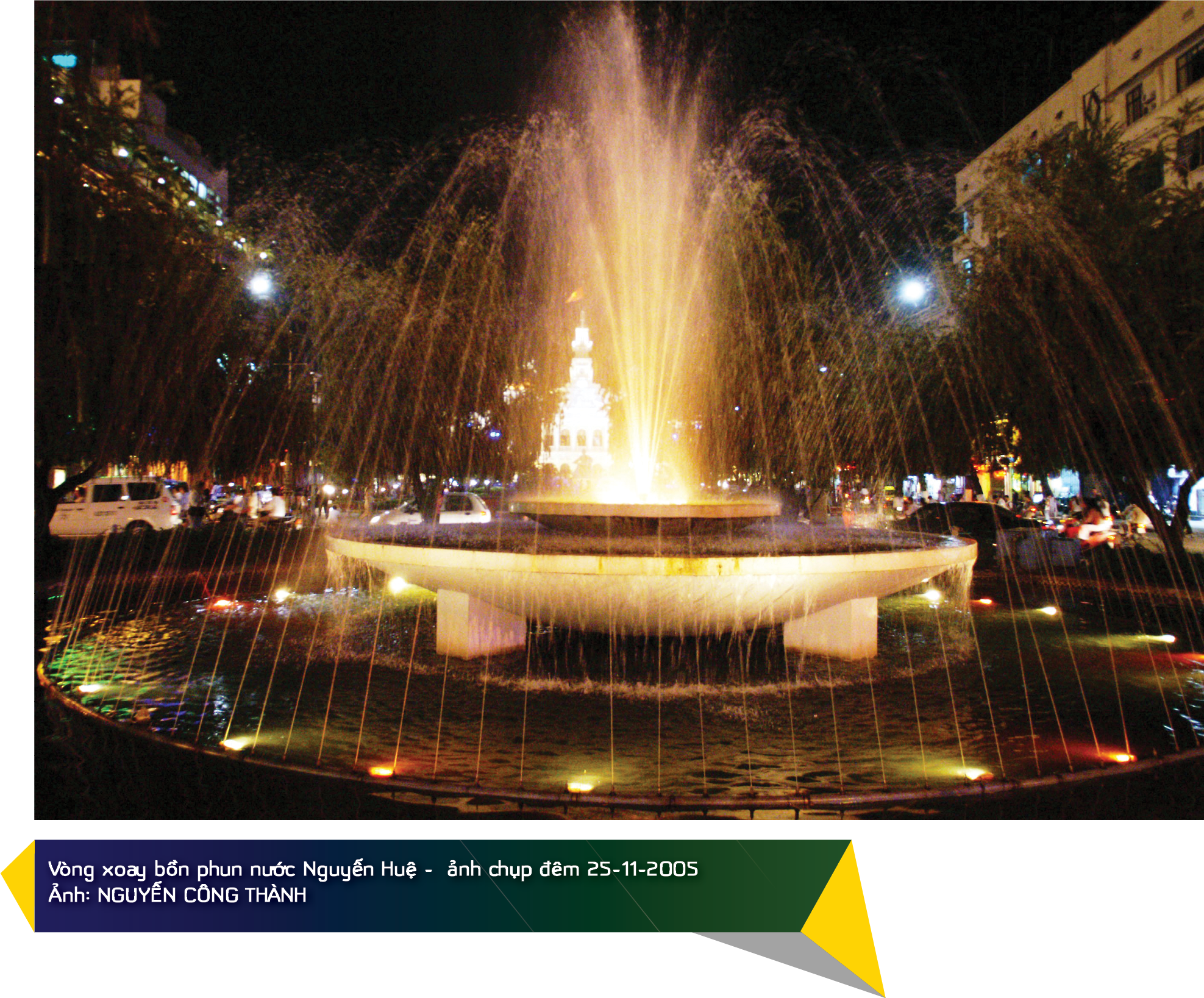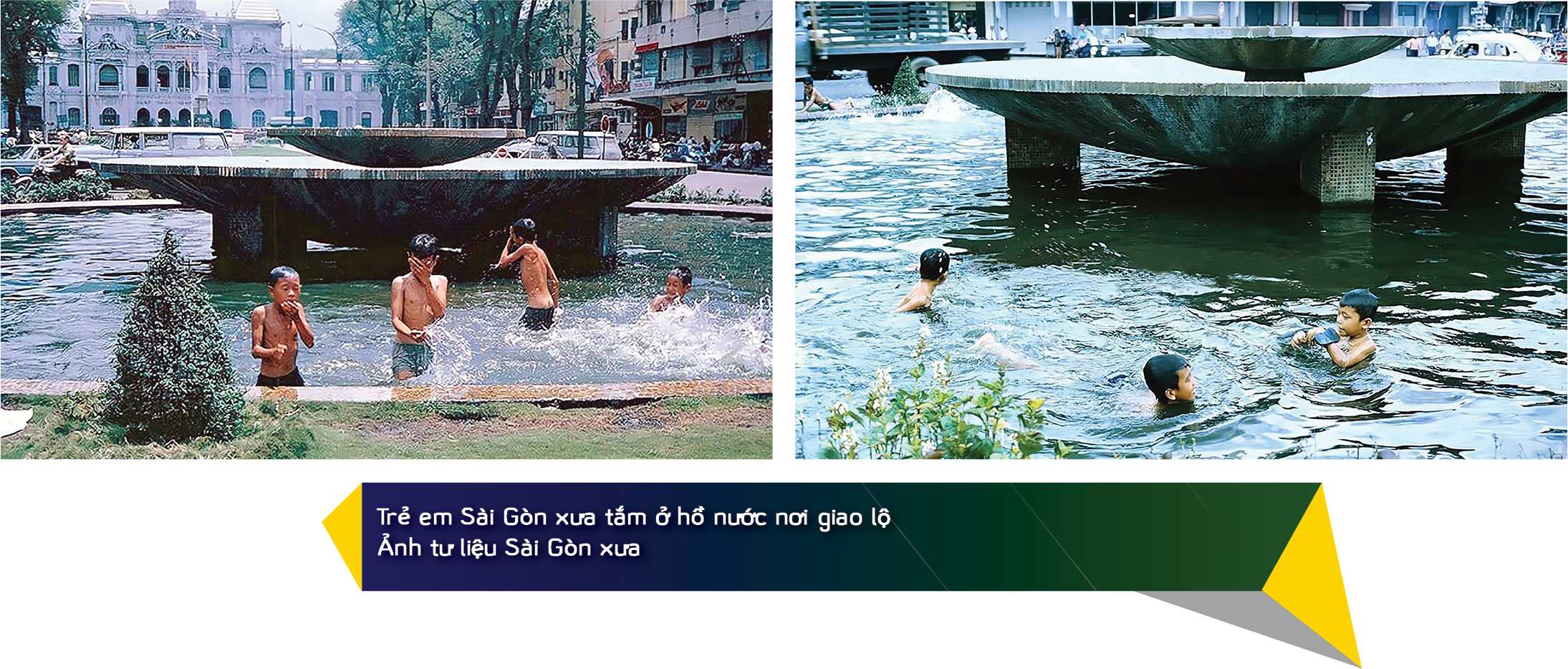Authorities in Ho Chi Minh City have approved a plan to restore a roundabout that was demolished eight years ago in the center of District 1 for the construction of a metro station system. News of its comeback was lauded by longtime citizens who cherish the city’s traditions.
‘The Willow Roundabout,’ named for the willow trees planted around the roundabout’s fountain in the past, sat at the intersection of Nguyen Hue Pedestrian Street and Le Loi Street in the heart of the southern city.
Memories of old Saigon
According to feng shui, a road should not lead to a building’s main entrance, hence the roundabout, which lay in front of the People’s Committee edifice, was thought to prevent bad luck.
Those who believe in feng shui also reckon that the trees and water featured in the roundabout could facilitate air circulation and purification.
|
|
| A 1880 urban map of Saigon features the Charner-Bonard roundabout and its fountain. |
Not everyone wants to see the roundabout restored for feng shui purposes.
A large group of residents hope the project will rekindle memories of Ho Chi Minh City’s good old days and add to the city’s esthetic value thanks to its fountain and the trees planted on its edge.
Le Loi Street will be converted into a pedestrian street once the city’s metro system is inaugurated, a plan launched by local officials who hope the new walking street, alongside the already popular Nguyen Hue promenade, will appeal to a greater audience thanks to the historic signage, artistic structures, and small-scale galleries planned for the underground centers below the two streets.
Prior to taking on its latest nickname, the Willow Roundabout was known as 'the Brass-band Roundabout' or simply 'the Saigon Roundabout.'
A brief history of the Willow Roundabout
The four buildings which surrounded the Willow Roundabout are rich in history.
One of these is the People’s Committee of Ho Chi Minh City, designed in 1909 following European architecture principles.
It currently overlooks the Bach Dang Wharf.
|
|
| Before the addition of a fountain, the Willow Roundabout was octagonal and featured a stage where French brass players performed on weekends. |
Another edifice which surrounded the Willow Roundabout was the erstwhile Saigon Tax Trade Center, known during French colonial time as Charner, which was situated to face both Nguyen Hue and Le Loi.
Nearby is the Saigon Opera House, which was constructed in 1901 and now sits at the junction of Le Loi and Dong Khoi Streets.
Nguyen Hue Street, which leads to the Saigon Opera House, used to feature a canal called ‘The Fabric Market Channel,’ though it was removed in the 1890s to make way for new construction.
Le Loi Street – formerly Bonard Street – used to be a water channel as well.
In the early 1900s, shortly after Ben Thanh Market was built in 1914, the street became a bustling shopping hub, boasting stores, apartments, theaters, and automobile showrooms.
Toward the end of Le Loi Street was Cuniac Square, now known as Quach Thi Trang Roundabout, where streets branch off toward Bach Dang Wharf, the train station, and Cho Lon (Chinatown) in District 5.
|
|
| The Willow Roundabout was eventually transformed into a circular fountain with willow trees planted at its flanks. This picture was taken after 1975, the milestone of Vietnam's reunification. |
Vuong Hong Sen, the author of ‘Saigon in the Past,’ a book which brings Ho Chi Minh City’s rich history to life, once said that French brass players performed at the roundabout on weekends and holidays.
This was likely the beginning of Western music making its way into public life in the city.
In 1942, the performance stage at the roundabout was replaced with a circular fountain, according to Nam Ky Weekly.
Willows were grown around the fountain in 1970, hence the name 'the Willow Roundabout.’
The traffic circle quickly became a popular spot for weekend and evening strolls, photoshoots with friends, and shopping.
In 2014, the Willow Roundabout, along with a roundabout and clock tower at the Nguyen Hue – Mac Thi Buoi intersection and a traffic circle at the Nguyen Hue – Ngo Duc Ke intersection, was demolished.
|
|
| In 2014, the Willow Roundabout was flattened to make way for the construction of a metro station system in Ho Chi Minh City. Photo: Phuc Tien / Tuoi Tre |
The removal of these roundabouts gave city planners the space they needed to turn the area into a pedestrian zone, flanked by one-way streets and high-rise buildings.
Experts weigh in
City planners hope residents and experts alike will be vocal in their opinions regarding changes to the cityscape.
Their main goal is to continue beautifying the city and maintaining connections to fading values of the past.
Phan Van Mai, chairman of the People’s Committee, tasked the Department of Transport with submitting a proposal on the restoration of Le Loi Street by May 20.
A highlight of the project is the reappearance of the Willow Roundabout, according to Mai.
Though many people would like Ho Chi Minh City to transition back to the past, others appreciate the city’s modern esthetics and would prefer the area slated for the Willow Roundabout restoration to be used as a green space, architect Vo Kim Cuong said.
|
|
| A bird’s-eye view of the Nguyen Hue – Le Loi junction, taken in 2018 when the Willow Roundabout was replaced with a water music display area. Photo: Tu Trung / Tuoi Tre |
“I think that the proposed Willow Roundabout is just for decoration. It is not a major structure so restoration does not have to be particularly complicated,” she said.
“I am happy with the current Nguyen Hue – Le Loi intersection.
"It reminds me of the once beautiful roundabout.”
Cuong shared that she looks forward to the resurrection of other well-known structures that once overlooked the area, such as the Saigon Tax Trade Center.
Nguyen Dinh Hoa, member of the Ho Chi Minh City Architect Association, explained that construction of the Willow Roundabout was a planned step in the redesign of the entire downtown area in the old Saigon.
The space in front of governmental buildings in District 1 all featured roundabouts, like the Pham Ngoc Thach – Le Duan Roundabout in front of the Reunification Palace and the Willow Roundabout in front of the People’s Committee of Ho Chi Minh City.
|
|
| The former Willow Roundabout has a new fountain, as seen in this picture taken in 2020. Photo: Tu Trung / Tuoi Tre |
“The roads around the People’s Committee building intersect one another, with the Nguyen Hue – Le Loi intersection being the largest. This arrangement helped to manage traffic in the area,” Hoa added.
“When Nguyen Hue Street was transformed into a pedestrian street, the intersections on the street were closed and traffic became much worse.
“I believe that restoring the Willow Roundabout can be a solution to traffic problems in the area.
"The city can also plant more trees to add a bit of freshness.
“The restored version won’t live up to the original, but it will still be a good reminder of the irreplaceable past.
“The Willow Roundabout, the Saigon Tax Trade Center, the Bach Dang Wharf, and Ben Thanh Market are historic landmarks of Ho Chi Minh City. They mark the glory of the best city of the south.”
|
|
| A water music show on April 23, 2015 on Nguyen Hue Street. Photo: Nguyen Cong Thanh / Tuoi Tre |
|
|
| The fountain at the Willow Roundabout in this photo taken on November 11, 2015. Photo: Nguyen Cong Thanh / Tuoi Tre |
|
|
| Children play in the fountain at the Willow Roundabout in old Saigon. |
Like us on Facebook or follow us on Twitter to get the latest news about Vietnam!




